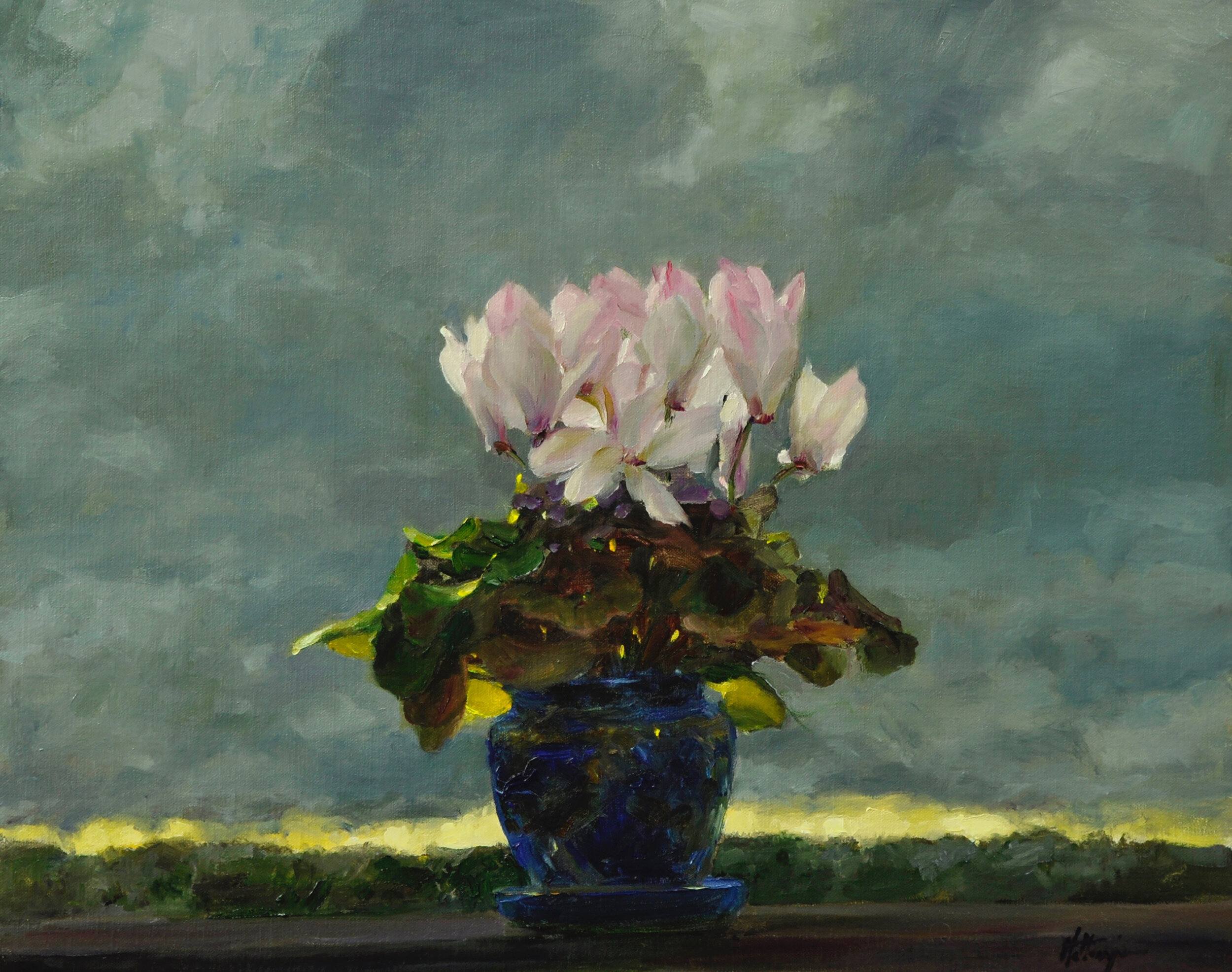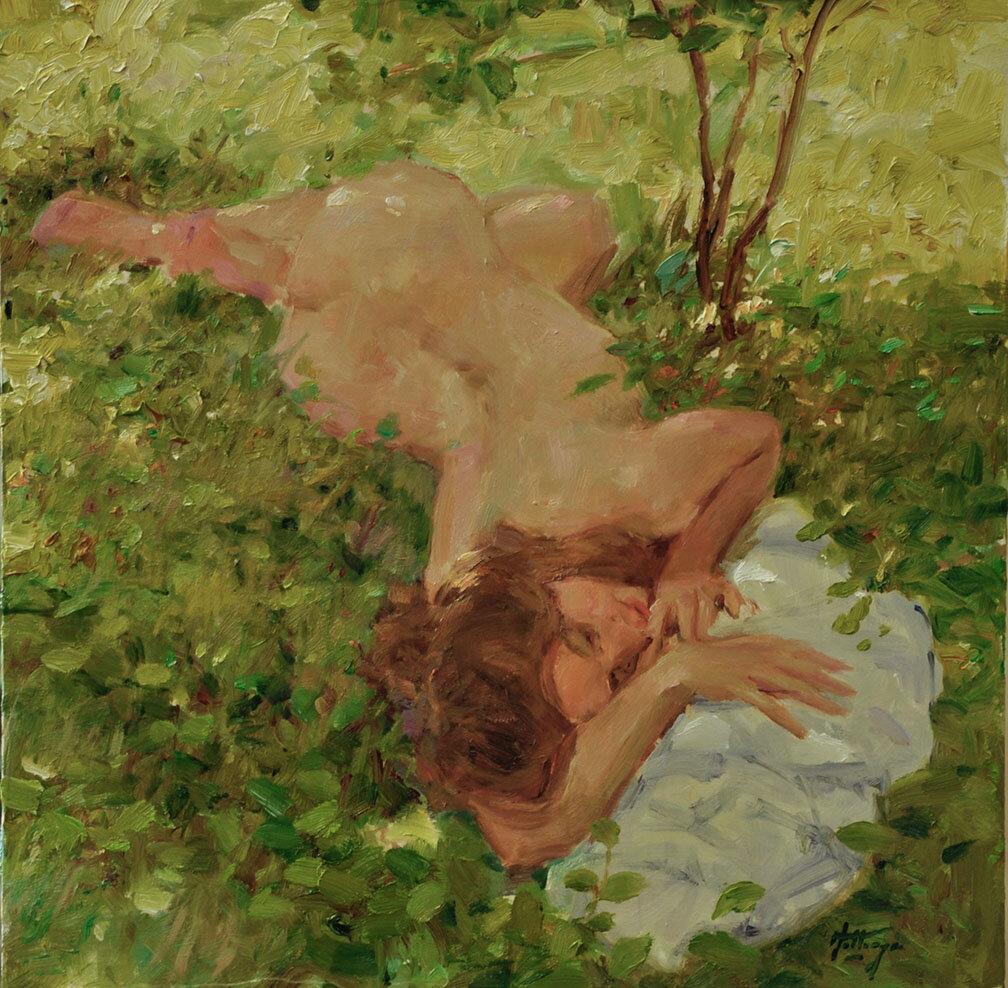Every painting deserves the “full treatment” if it's really worth doing. That “full treatment” includes the care each brush stroke requires to add to the feelings we want to express through our art. No matter what style we use to express ourselves how we apply the paint is important. Understanding how each stroke can add or diminish our feelings while painting will determine the success of the piece. Boredom comes through when our goal is only to finish a painting and move onto the next one. We tend to repeat paintings with no other purpose than to cover as much canvas as possible in a life time. Vermeer covered very little canvas, what canvas he did cover added to the world's treasures. Experts cannot decide whether Vermeer did 21 paintings or 33. 33 is not many paintings.
Jackson Pollock dripped paint onto his canvas with great care. These days many artists simply want to crank out a canvas in hopes of having a buyer find it suitable to hang on a wall somewhere. This blog is in response to people asking how to stave off boredom.
I find every aspect of creating art exciting: the brush work, the laying-on of paint, laying-on of color, to be the most exciting part of the process of creating art. I love a mosaic of colorful strokes. Sitting in church one day in Chicago I got lost in the mosaic behind the alter. All those pieces of glass and porcelain laid out creating a beautiful work of art. Back in painting class I tried to duplicate that mosaic look with my brush. Brushwork has interested me ever since. Using a variety of brushwork plays in my work in that it adds interest beyond the subject I use to express myself. Some artists use a palette knife while others use paint scrapings or one simple scrape-off of paint in areas, leaving those places for the viewer to enjoy. Really, anything goes if used right.



